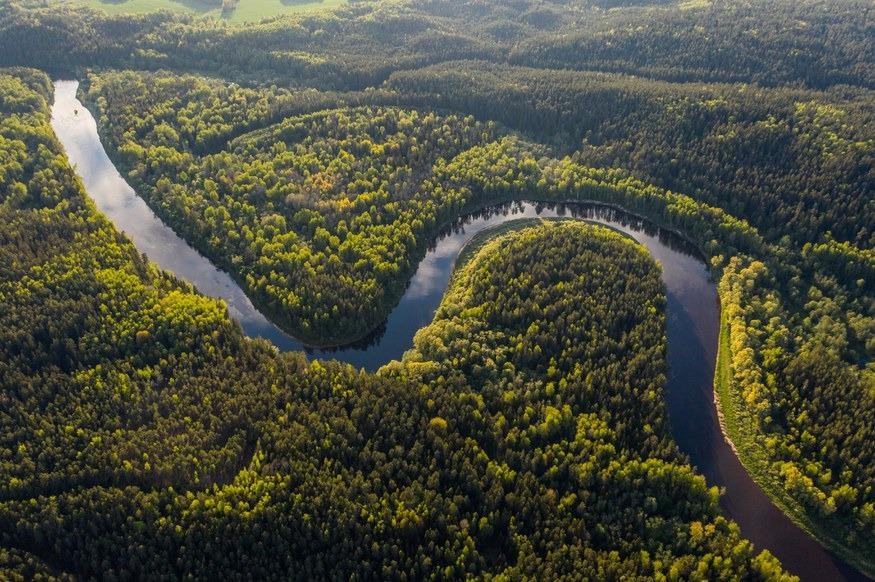Data analysis obtained from high-resolution satellite images indicates that the Amazon rainforest is potentially losing its resilience.

Image Credit: Ivars Utināns/Unsplash
The reason behind this is the stress coming from a combination of logging and burning — the impact of human-caused climate change is not determinable to date, but will be a matter of concern in the future.
For about three-quarters of the forest, the potential to recover from perturbation has been decreasing since the early 2000s, which has been seen as a warning sign by the researchers. The new evidence has been obtained from advanced statistical analysis of satellite data showing alterations in vegetation biomass.
Reduced resilience—the ability to recover from perturbations like droughts or fires – can mean an increased risk of dieback of the Amazon rainforest. That we see such a resilience loss in observations is worrying.
Niklas Boers, Potsdam Institute for Climate Impact Research
Boers added, “The Amazon rainforest is a home to a unique host of biodiversity, strongly influences rainfall all over South America by way of its enormous evapotranspiration, and stores huge amounts of carbon that could be released as greenhouse gases in the case of even partial dieback, in turn contributing to further global warming. This is why the rainforest is of global relevance.”
Boers also belongs to the Technical University of Munich and conducted the study collaboratively with scientists from the University of Exeter, UK.
“When the Tipping itself will be Observable, it would be Too Late”
The Amazon is regarded as a potential tipping element in the Earth system, and numerous studies have helped disclose its vulnerability.
However, computer simulation studies of its future yield quite a range of results. We’ve therefore been looking into specific observational data for signs of resilience changes during the last decades. We see continuously decreasing rainforest resilience since the early 2000s, but we cannot tell when a potential transition from rainforest to savanna might happen. When it will be observable, it would likely be too late to stop it.
Niklas Boers, Potsdam Institute for Climate Impact Research
The study is part of a project named, “Tipping Points in the Earth System” (TiPES) which was financially supported by the European Union’s Horizon 2020 program.
The researchers from the Potsdam Institute for Climate Impact Research and the Global Systems Institute of the University of Exeter utilized stability indicators that had earlier been applied to the Atlantic overturning circulation and the Greenland ice sheet.
The goal of these statistical indicators is to predict the approach of a system towards a sudden change by determining a crucial deceleration of the system’s dynamics — for example, its reaction to weather variability.
The examination of two satellite data sets, which represent biomass and the greenness of the forest, disclosed the crucial deceleration. This crucial slowing down can be noticed as a weakening of the restoring forces that generally bring the system back to its equilibrium following perturbations.
“A System Might Seem Stable if One is Considering Only its Mean State”
While a system might seem stable if one is considering only its mean state, taking a closer look at the data with innovative statistical methods can reveal resilience loss. Previous studies based on computer simulations indicated that large parts of the Amazon can be committed to dieback before showing a strong change in the mean state. Our observational analysis now shows that in many areas destabilization indeed seems to be underway already.
Chris Boulton, Global Systems Institute, University of Exeter
To try and identify the causes of the loss of resilience that the researchers found in the data, they explored the relation to rainfall in a provided area in the Amazon. This culminates in three “once in a century” drought events in the region. Drier areas are more at risk compared to wetter ones.
Boers stated, “This is alarming, as the IPCC models project an overall drying of the Amazon region in response to anthropogenic global warming.”
One more factor that is responsible is the distance of an area from the roads from where people can access the forest. The data asserts that areas close to human land use are more threatened.
“Our novel analysis of empirical data brings additional evidence to the worries about the forest’s resilience, especially in the near future. It confirms that strongly limiting the logging, but also limiting global greenhouse gas emissions, is necessary to safeguard the Amazon,” stated Tim Lenton, Director of the Global Systems Institute.
Journal Reference:
Boulton, C. A., et al. (2022) Pronounced loss of Amazon rainforest resilience since the early 2000s. Nature Climate Change. doi.org/10.1038/s41558-022-01287-8.